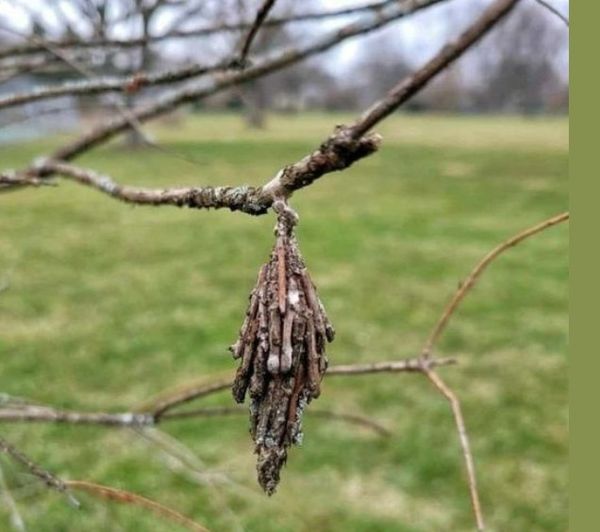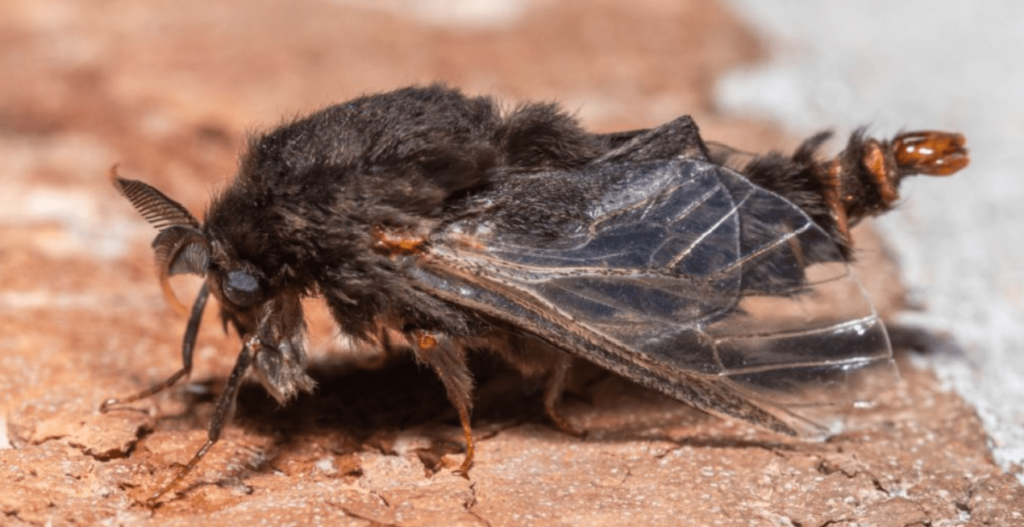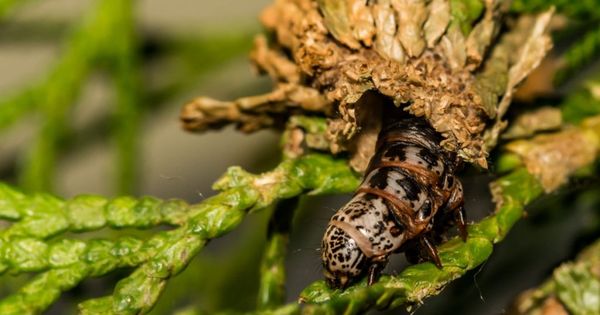
Anyone who has dealt with an infestation of evergreen borer knows the impact these little critters can have on our beloved trees. These beautiful evergreen trees lose their pine needles and eventually burn. But don’t worry! There are ways to save trees if you know what to do.
Evergreen Inchworm: A Silent Tree Menace
Few pests are as well-known as the evergreen white bug, which threatens the health and attractiveness of trees. Thyridopteryx ephemeraeformis (scientific term Thyridopteryx ephemeraeformis) is a species of moth in the Psychidae family. These small creatures may not be visible, but they can cause serious damage. They take their name from the unique protective covers they make for themselves and are also called pouches or pouches.
Over time, this structure grows and becomes a portable hiding place and camouflage, looking like a small bag hanging from a tree branch. Life cycle of evergreen worms

Understanding the life cycle of evergreen worms is essential to effective management and control of these pests. The reproductive cycle of this moth begins when the adult female lays eggs in the pouch, which remain on the tree after death. These eggs remain dormant throughout the winter and hatch in late spring or early summer to give birth to small larvae.
The newly hatched larvae emerge from the sac in search of a suitable host tree. After finding a suitable location, they begin to make bags from the silk produced by special glands in their body. At first, the sacs are small and inconspicuous, but as the larvae grow, they periodically emerge and fill the enclosure with additional plant debris, causing the sacs to become larger and more visible over time. As the larva grows, it sheds its shell and molts several times to match its size. A new pouch is created at each stage of growth. In late summer or early fall, whitefly larvae enter their final instar, which usually lasts six weeks, and prepare to pupate.
In the protective shell, the moth passes from the larval stage to the adult stage. Pupae grow in invisible worm nests. After about two weeks, the adult moth emerges from a round hole in the bag. The larger, wingless female moths stay close to the natal tree, while the smaller, darker, more prominently winged males fly in search of females.
The destructive nature of the evergreen beetle
Evergreen borers may seem harmless at first, but if left untreated, they can cause serious damage to your trees. These pests are voracious eaters that feed on the leaves of a variety of tree species. They hide in bags and use the protection and camouflage they offer. Leaf drop from caterpillar larvae eating the tree’s leaves interferes with the tree’s ability to photosynthesize and produce the nutrients it needs to grow and survive. This feeding behavior weakens the tree and makes it more susceptible to other diseases, pests and environmental stressors. If left untreated, evergreen whiteflies can cause damage to trees and in some cases kill the tree.
Control of evergreen worm infestations
To protect your trees from the destructive effects of evergreen beetles, it is essential to maintain tree health through prompt and effective management. Here are some strategies and tactics to consider:
healing tree
It is always better to prevent evergreen leafworm than to treat it. Using the following methods can help reduce the likelihood of infestation and improve the overall health of your tree.
– Check your trees regularly for signs of dog beetle infestation, such as stems hanging from branches. – Cut and destroy any pouches found on the tree, especially in winter when the eggs are dormant.

– Create a barrier around the tree using logs or screens to prevent adult females from laying eggs in the tree. – Water your tree well and provide it with enough nutrients to maintain its vitality and strength.
By keeping your trees healthy and taking preventative measures, you can protect them from the silent threat of evergreen white bugs. to fall into
Evergreen borers are small and barely visible, but they have the ability to kill trees silently. By understanding your tree’s life cycle, understanding its destructive power, and using the right care practices, you can protect your trees from these insidious invaders. Regular inspections, preventative measures and maintaining healthy trees will go a long way in keeping pests under control and maintaining the beauty and vitality of your landscape. Don’t let the silent threat of evergreen worms rob you of the joy that trees bring.
